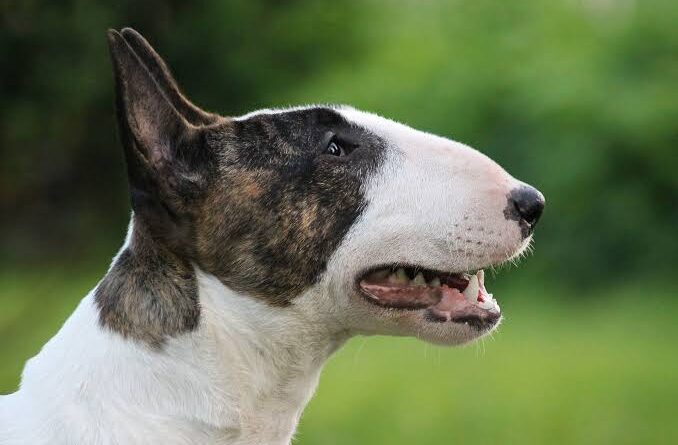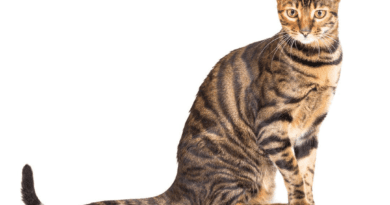Bull Terrier Dog Breed: Description, Health, Origin and Care Guide
The Bull Terrier is a breed of dog that was originally developed in England in the 19th century for dog fighting and ratting. They were created by crossing the Old English Bulldog with various terrier breeds, resulting in a dog with a strong and muscular build.
Bull Terriers are known for their unique egg-shaped heads and their playful and mischievous personalities. They are also very loyal and affectionate towards their owners, and can make great family pets.
There are two different varieties of Bull Terrier: the standard Bull Terrier and the miniature Bull Terrier. The standard Bull Terrier typically weighs between 50 and 70 pounds and stands about 20-24 inches tall at the shoulder, while the miniature Bull Terrier is smaller, weighing between 20 and 35 pounds and standing 10-14 inches tall.
Bull Terriers are energetic dogs that require regular exercise and mental stimulation. They are also prone to certain health issues, such as deafness and skin allergies, so it’s important to choose a reputable breeder and keep up with regular vet checkups.
Read Also: American Bullies: Description, Health, Origin and Complete Care Guide
Appearance and Size of the Bull Terrier Dog Breed
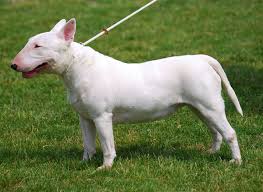
The Bull Terrier is a unique breed of dog that is instantly recognizable for its distinctive egg-shaped head and muscular build. This breed was originally developed in England in the 19th century by crossing various terrier breeds with the Old English Bulldog, resulting in a dog that was both strong and agile.
One of the most striking features of the Bull Terrier is its head, which is round and smooth with no stop or furrow between the eyes. The head is often described as “egg-shaped” or “oval,” and is quite unlike the head of any other breed of dog. The Bull Terrier’s eyes are small and deeply set, and its ears are thin and erect.
The body of the Bull Terrier is short and muscular, with a broad chest and well-sprung ribs. The breed’s coat is short and dense, and comes in a variety of colors, including white, black, brindle, fawn, and tri-color.
There are two different sizes of Bull Terrier: the standard Bull Terrier and the miniature Bull Terrier. The standard Bull Terrier typically weighs between 50 and 70 pounds and stands about 20-24 inches tall at the shoulder, while the miniature Bull Terrier is smaller, weighing between 20 and 35 pounds and standing 10-14 inches tall.
Despite their muscular build, Bull Terriers are surprisingly agile and athletic. They are often described as “clowns” due to their playful personalities and tendency to engage in goofy antics. They are also known for their loyalty and affection towards their owners, and can make great family pets.
When it comes to grooming, Bull Terriers are relatively low-maintenance. Their short, dense coat requires regular brushing to keep it looking shiny and healthy, but they do not need to be bathed frequently.
However, owners should be aware that Bull Terriers are prone to certain health issues, such as skin allergies and deafness, so regular veterinary checkups are important.
Additionally, the Bull Terrier is a unique and striking breed of dog that is sure to turn heads wherever it goes. Its distinctive appearance and playful personality make it a popular choice among dog lovers worldwide.
Whether you opt for the standard or miniature version of this breed, you are sure to be rewarded with a loyal and affectionate companion that will bring joy and laughter to your life.
Temperament and Personality of Bull Terrier Dogs
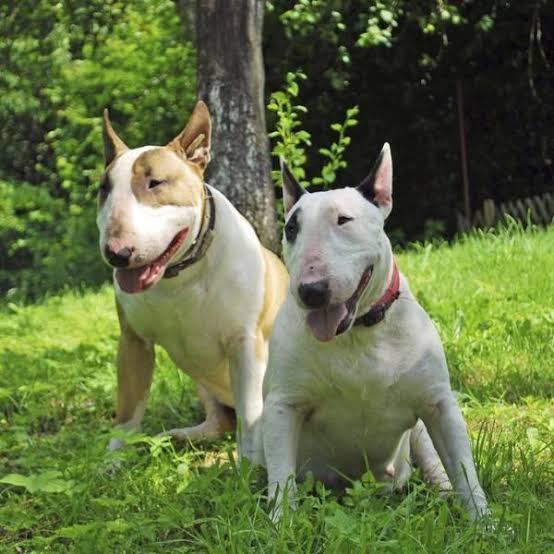
The Bull Terrier is a breed of dog that is known for its playful and mischievous personality. These dogs are often described as “clowns,” due to their love of performing silly antics and making their owners laugh.
Despite their reputation as a fun-loving breed, Bull Terriers are also very loyal and affectionate towards their owners. They thrive on human attention and love nothing more than spending time with their families.
Bull Terriers can be quite stubborn at times, and may require firm and consistent training to prevent them from becoming overly dominant. However, with the right approach, these dogs can be trained to be obedient and well-behaved.
One of the key things to keep in mind when it comes to the temperament of Bull Terriers is that they are very social animals. They do not do well when left alone for long periods of time, and may become destructive or develop separation anxiety if they are not given enough attention.
Bull Terriers are also known for their high energy levels, and require plenty of exercise and mental stimulation to stay happy and healthy. They enjoy going for long walks, playing games of fetch, and participating in other activities that allow them to burn off their excess energy.
Overall, the Bull Terrier is a breed of dog that is full of personality and has a lot to offer as a companion animal. While they do require a certain level of training and attention, they are well worth the effort for anyone looking for a fun-loving and loyal companion.
History and Origin of the Bull Terrier
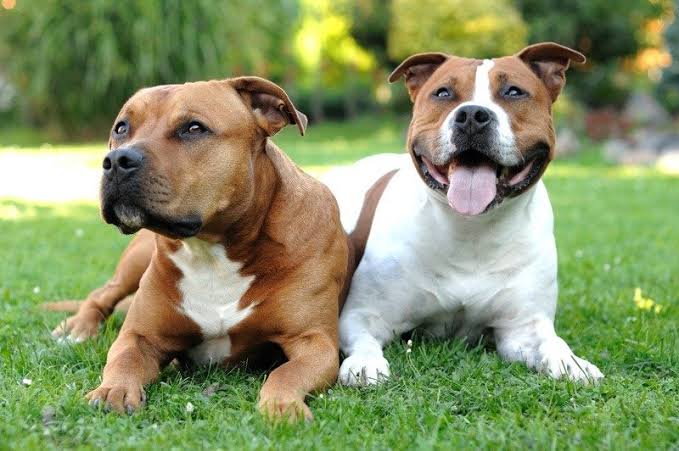
The Bull Terrier is a breed of dog with a rich and fascinating history that dates back to 19th century England. This breed was originally developed by crossing various terrier breeds with the Old English Bulldog, resulting in a dog that was both strong and agile.
The Bull Terrier was first bred for the cruel and barbaric sport of dog fighting, which was popular in England at the time. However, as attitudes towards animal cruelty began to change in the late 1800s, the Bull Terrier’s purpose shifted to that of a companion animal and show dog.
One of the most famous breeders of Bull Terriers was James Hinks, who is credited with creating the first “modern” Bull Terrier. Hinks was a passionate dog lover who believed that the Bull Terrier should be bred for its temperament and appearance, rather than for its fighting ability.
Under Hinks’ guidance, the Bull Terrier underwent significant changes in appearance. Hinks’ dogs were taller and more refined than the original Bull Terriers, and had a distinctive egg-shaped head that set them apart from other breeds.
The Bull Terrier quickly gained popularity as a show dog, and by the early 1900s, it was one of the most popular breeds in England. In 1936, the breed was recognized by the American Kennel Club, and it has since become a popular breed in the United States as well.
Today, the Bull Terrier is no longer bred for dog fighting, and instead, it is valued for its playful and affectionate personality. While it is still a popular show dog, the Bull Terrier is also a beloved family pet that is known for its loyalty and devotion to its owners.
Despite its brutal origins, the Bull Terrier has emerged as a breed that is both resilient and adaptable. Its fascinating history is a testament to the breed’s ability to overcome adversity and evolve into the loving and loyal companion that it is today.
Health Issues and Lifespan of the Bull Terrier
The Bull Terrier is generally a healthy breed of dog, but like all breeds, it is prone to certain health issues that owners should be aware of. Here are some of the most common health problems that can affect Bull Terriers:
Deafness: Bull Terriers are prone to deafness, especially those that have a lot of white in their coat. Deafness can be present at birth or develop over time.
Skin allergies: Some Bull Terriers may develop allergies to certain foods, environmental allergens, or grooming products. This can cause skin irritation and itching.
Heart disease: Bull Terriers may be prone to certain types of heart disease, such as dilated cardiomyopathy, which can lead to heart failure.
Kidney disease: Some Bull Terriers may be prone to developing kidney disease, which can lead to kidney failure if left untreated.
Joint problems: Bull Terriers may be prone to joint problems such as hip dysplasia, which can cause pain and discomfort.
Eye problems: Bull Terriers may be prone to certain eye conditions such as cataracts, which can cause vision loss.
The average lifespan of a Bull Terrier is around 11-14 years. However, this can vary depending on the individual dog and its health status. It is important for owners to provide their Bull Terriers with proper veterinary care, including regular check-ups and vaccinations, to help ensure their dog stays healthy and lives a long, happy life.
Proper nutrition and exercise are also important for maintaining the health and wellbeing of a Bull Terrier. Owners should provide their dog with a high-quality diet that is appropriate for their age and activity level, and ensure that they get enough exercise to keep them fit and healthy.
In addition, while the Bull Terrier is generally a healthy breed, it is important for owners to be aware of the potential health issues that can affect their dog. With proper care and attention, owners can help ensure that their Bull Terrier stays healthy and happy for many years to come.
Bull Terrier Dogs Grooming and Care Guide
The Bull Terrier is a unique and beloved breed that requires proper grooming and care to maintain its health and appearance. Whether you’re a seasoned Bull Terrier owner or new to the breed, here’s everything you need to know about grooming and caring for your furry friend.
1. Bathing
Bull Terriers have a short, smooth coat that is easy to maintain. They don’t require frequent baths unless they get particularly dirty or smelly. When bathing your Bull Terrier, use a gentle dog shampoo that is specifically formulated for their skin and coat. Be sure to rinse thoroughly to avoid leaving any residue that can cause skin irritation.
2. Brushing
Bull Terriers shed moderately, and regular brushing can help keep their coat healthy and shiny. A soft-bristled brush or grooming mitt can be used to remove loose hair and dirt from their coat. Be sure to brush gently, as Bull Terriers have sensitive skin.
3. Nail trimming
Bull Terriers’ nails should be trimmed regularly to prevent them from becoming overgrown and causing discomfort or injury. If you’re uncomfortable trimming your dog’s nails yourself, you can take them to a professional groomer or veterinarian for this task.
4. Ear cleaning
Bull Terriers have small, erect ears that can collect dirt and wax, leading to infections. Clean your Bull Terrier’s ears regularly with a gentle, dog-specific ear cleaner and cotton balls or pads. Be sure not to insert anything into the ear canal, as this can cause injury.
5. Dental care
Like all dogs, Bull Terriers can develop dental issues such as gum disease, tartar buildup, and tooth decay. Regular brushing with a dog-specific toothpaste and toothbrush can help prevent these issues. Providing dental chews and toys can also help keep your Bull Terrier’s teeth clean and healthy.
6. Exercise
Bull Terriers are an active breed that requires daily exercise to stay healthy and happy. This can include walks, playtime in a fenced yard, or trips to a dog park. Be sure to provide plenty of opportunities for exercise and mental stimulation to prevent boredom and destructive behavior.
7. Healthcare
Regular veterinary checkups and preventative care, including vaccinations and parasite prevention, are crucial to maintaining your Bull Terrier’s health. Be sure to keep up with all recommended healthcare tasks and consult your veterinarian with any concerns about your dog’s health.
Additionally, grooming and caring for a Bull Terrier is a relatively straightforward process that can be easily integrated into your daily routine. With regular attention and care, you can help ensure that your furry friend stays healthy, happy, and looking their best for years to come.
Staffordshire Bull Terrier Dogs
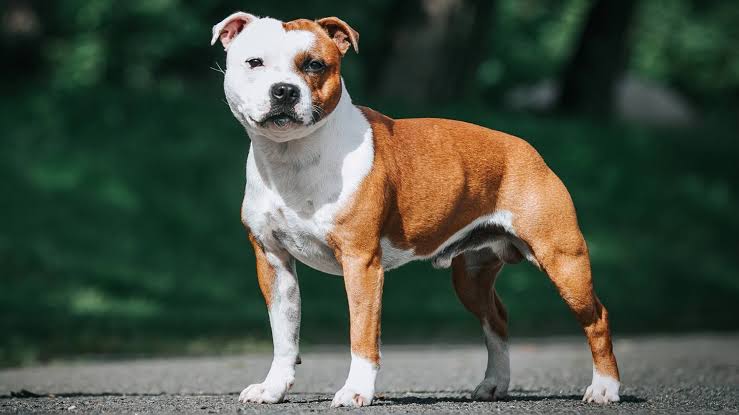
The Staffordshire Bull Terrier is a muscular and athletic breed with a short, smooth coat that comes in a variety of colors, including black, blue, fawn, brindle, and red.
They have a broad head with a short, wide muzzle and a powerful jaw. Their ears are small and can be either rose or half-pricked. The Staffy’s tail is usually docked, although this practice is illegal in many countries.
Staffordshire Bull Terriers are a medium-sized breed, with males typically standing 14-16 inches tall at the shoulder and weighing between 28-38 pounds. Females are slightly smaller, standing 13-15 inches tall and weighing 24-34 pounds.
The Staffordshire Bull Terrier is known for being a friendly, affectionate, and loyal breed that is great with children. They are intelligent and eager to please, which makes them easy to train.
However, they can be strong-willed and may require firm but fair leadership from their owners. Early socialization and training are essential to help ensure that Staffies grow up to be well-behaved and well-adjusted adults.
Like all breeds, Staffordshire Bull Terriers are prone to certain health issues. These may include hip dysplasia, elbow dysplasia, cataracts, and skin allergies. Regular veterinary checkups and preventative care are important to maintain your Staffy’s health and catch any potential issues early.
Staffordshire Bull Terriers are an active breed that requires daily exercise to stay healthy and happy. This can include walks, playtime in a fenced yard, or trips to a dog park. Be sure to provide plenty of opportunities for exercise and mental stimulation to prevent boredom and destructive behavior.
In addition, the Staffordshire Bull Terrier is a loyal and affectionate breed that makes a great companion for families. With proper socialization, training, and care, they can live long, healthy lives and bring joy to their owners for years to come.
English Bull Terrier Dogs
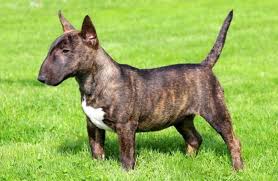
Ah, the English Bull Terrier – a breed that’s as unique as they come! With their “egg-shaped” head and muscular build, these dogs are sure to turn heads and attract attention wherever they go. But there’s more to the English Bull Terrier than just their looks – they’re also beloved for their playful personalities and affectionate nature.
Legend has it that the English Bull Terrier was first bred in the mid-19th century by crossing Bulldogs with Terriers. These dogs were originally used for bull-baiting and other blood sports, but over time, they became popular as companions and were bred for their friendly and loyal temperaments.
Today, the English Bull Terrier is known for their love of play and their ability to make their families laugh. They’re often described as “clowns” due to their silly antics and comical expressions. But don’t be fooled – these dogs are also fiercely loyal and will do whatever it takes to protect their loved ones.
Of course, like any breed, English Bull Terriers require proper care and attention to thrive. They need plenty of exercise to keep them healthy and happy, and early socialization and training is important to help them develop good manners and prevent any behavior problems down the line.
When it comes to grooming, English Bull Terriers are relatively low-maintenance. Their short, smooth coat doesn’t require much upkeep beyond regular brushing, and they only need the occasional bath to keep them clean and fresh-smelling. But don’t neglect those distinctive ears – they should be cleaned regularly to prevent any infections or irritations.
So if you’re looking for a dog that’s as unique as they come, look no further than the English Bull Terrier. With their playful personalities and affectionate nature, they’re sure to steal your heart and make you smile every day.
Read Also: Chow Chows: Description, Health, Origin and Care Guide
Bull Terrier Puppies

When choosing a Bull Terrier puppy, it’s important to find a reputable breeder who has taken care to breed healthy, well-adjusted puppies. Look for a breeder who screens their breeding dogs for health issues and who socializes their puppies from a young age to help them develop good temperaments.
Once you’ve found a breeder, it’s time to choose your puppy! Bull Terrier puppies come in a variety of colors, including white, brindle, black, and tri-color. Keep in mind that puppies will change as they grow older, so their color and markings may change over time.
When you bring your Bull Terrier puppy home, it’s important to provide them with plenty of socialization and training to help them develop into well-adjusted adults. This can include exposure to different people, animals, and environments, as well as consistent training to help them learn good manners and prevent any behavior problems.
It’s also important to provide your Bull Terrier puppy with plenty of exercise and mental stimulation to help them burn off their excess energy and prevent boredom. This can include daily walks, playtime in a fenced yard, or games like fetch or tug-of-war.
When it comes to feeding, Bull Terrier puppies require a high-quality puppy food that’s formulated to meet their unique nutritional needs. Your breeder or veterinarian can recommend a good brand and feeding schedule for your puppy.
Of course, don’t forget about grooming! Bull Terrier puppies have short, smooth coats that are relatively easy to maintain, but they do require regular brushing and occasional baths to keep them clean and healthy.
In summary, Bull Terrier puppies are a unique and adorable addition to any family. With proper care and attention, they can grow up to be healthy, well-adjusted adults who bring joy and laughter to their owners for years to come.
Read Also: 4 Health Benefits of Date Fruits (Phoenix Dactylifera)

